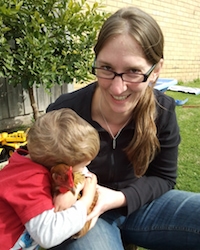This is the sixth in a series of posts on BiM about chapters in the edited collection, Meanings of Pain (2016, Springer).
—
Every day we are bombarded with expressions that borrow from the world of pain.
Public spokespersons frequently allude to harmful implications of social, environmental or economic policies and events, such as the painful impacts of environmental disasters, the hurt, agony or suffering that will be caused by changes in policies or practices for those who are already vulnerable. Our almost innate use of the language of pain, injury, harm and suffering is an extremely powerful communication tool that speaks to our most basic human urge to avoid suffering and promote welfare and equity.
But what about the way in which we describe our spontaneous reactions when we witness another person in pain, such as a child who has fallen from their bike, your partner who is recovering from surgery, or events that occur far from us that we witness via the media (like those awful images of Syrians painfully struggling to breath after exposure to chemical weapons in April this year)? Many of you may exclaim or grasp your own a body part(s) as if in pain yourself, but most of us do not literally feel pain at these times, no matter how upsetting the other’s pain or suffering might be to us. Some of us do, however. Indeed, one in every 3 to 4 people report that they do literally feel pain in these circumstances, which we describe as an experience of vicarious, empathic, sympathetic or synesthetic pain [3; 8].
In our recent book chapter in the book Human Meanings of Pain [4], we summarise what we have learned to date about this curious phenomenon and why it might arise. Studies have now examined the patterns of activity in the brain and nervous system associated with vicarious pain using several exploratory techniques, including functional Magnetic Resonance Imaging, Transcranial Magnetic Stimulation, Electroencephalography and other methods of electrophysiology. In brief, across all of these techniques, vicarious pain experience is associated with higher levels of activity in the same brain regions (and systems) involved in the first-hand experience of pain, as well as reduced activity in brain regions (and systems) that are integral to “dampen” that activity.
While these patterns of brain activity might suggest that vicarious pain involves excessive “mimicry” of the states and experiences of others, we have found that people who experience vicarious pain are not more likely to mimic another’s behaviours (measured through changes in breathing patterns) when they are in pain [9]. Rather, vicarious pain is associated with high levels of emotional distress and arousal when witnessing another in pain (or when viewing threatening scenarios or emotional expressions, like anger or fear), that cannot be regulated efficiently [7]. This is especially the case for people who have high levels of anxiety in everyday life [7]. In fact, these findings suggest that vicarious pain may actually be an anxiety-related “symptom” or sensation, given that anxiety is also associated with greater difficulty in regulating emotion and arousal when faced with threatening stimuli.
Altogether, these insights highlight that several strategies that can be used to manage anxiety and distress might also help to bring vicarious pain under control if it is troubling, such as mindfulness and meditation [5]; however further research is needed to confirm the effectiveness of these techniques on vicarious pain.
However, our understanding of a few factors associated with a vicarious pain experience only comprises a small piece of the puzzle about HOW and WHY these experiences arise, and it tells us very little about WHEN they might occur. To answer these questions it would be necessary to probe the lived experience through interviews and narrative analyses, and not simply through tightly controlled experimental conditions. While no studies have used qualitative research methods to explore the contexts in which vicarious pain arises, we have gathered many anecdotes from our studies which might contribute to a better understanding of the complexities of vicarious pain. For example, familiarity and fondness for the person in pain matters a great deal in altering the intensity and meaning of the vicarious pain experience, as does the potential vulnerability of the person in pain (e.g., a child, or wife who experiences chronic pain). These factors are also known to be integral to the degree to which we empathise with another, including in-group biases [6] and morality-based appraisals of whether that person may have deserved their condition [2]. In a detailed case report presented in our book chapter, we highlight that context and experience play a key role in how vicarious pain is experienced, and what it means. Specifically, it this woman found that it was especially distressing when her child had been injured, but in other circumstances (vicarious) painful sensations were a helpful additional “sense” that allowed her to better “read” the pain experienced by her patients.
While most of us possess the capacity to empathise with others in pain, we are pretty certain that not everyone will experience spontaneous vicarious pain sensations when witnessing another in pain.
Most of us will, however, experience alterations in our own sensory and affective states when we witness another in pain (e.g., enhancing sensitivity to acute painful sensation) [1], highlighting that vicarious experiences may ultimately manifest along a spectrum or social and emotional processes.
About Melita Giummarra
 Dr Melita Giummarra is a research fellow in the Department of Epidemiology and Preventive Medicine at Monash University. Over the past ten years she has led a program of research on pain following injury, chronic pain, and the social context of pain and suffering. She became fascinated in vicarious pain experience during her PhD on phantom limb experience when several amputees described vivid sensory “contagion” in their phantom limb when they witnessed another in pain. After several years studying vicarious pain in clinical and community samples, she now seeks to disentangle why and how some injury compensation systems cause more harm than good, and what they can do about it. Her research focuses towards the implementation of evidence based policies. Which is just a complicated way of say that, at the end of the day, every injured person should be able to receive the right care, at the right time, regardless of where they live.
Dr Melita Giummarra is a research fellow in the Department of Epidemiology and Preventive Medicine at Monash University. Over the past ten years she has led a program of research on pain following injury, chronic pain, and the social context of pain and suffering. She became fascinated in vicarious pain experience during her PhD on phantom limb experience when several amputees described vivid sensory “contagion” in their phantom limb when they witnessed another in pain. After several years studying vicarious pain in clinical and community samples, she now seeks to disentangle why and how some injury compensation systems cause more harm than good, and what they can do about it. Her research focuses towards the implementation of evidence based policies. Which is just a complicated way of say that, at the end of the day, every injured person should be able to receive the right care, at the right time, regardless of where they live.
References
[1] Craig KD, Weiss SM. Vicarious influences on pain-threshold determinations. J Pers Soc Psychol 1971;19(1):53-59.
[2] Decety J, Cowell JM. Empathy, justice, and moral behavior. AJOB neuroscience 2015;6(3):3-14.
[3] Giummarra MJ, Fitzgibbon BM, Georgiou-Karistianis N, Beukelman M, Verdejo-Garcia A, Blumberg Z, et al. Affective, sensory and empathic sharing of others’ pain: The Empathy for Pain Scale. Eur J Pain 2015;19(6):807-816.
[4] Giummarra MJ, Tracy LM, Young KA, Fitzgibbon BM. The social side of pain: What does it mean to feel another’s pain? In: van Rysewyk S (2016) Meanings of Pain: Springer International Publishing, 2016. pp. 355-374.
[5] Goyal M, Singh S, Sibinga EMS, Gould NF, Rowland-Seymour A, Sharma R, et al. Meditation Programs for Psychological Stress and Well-being A Systematic Review and Meta-analysis. Jama Internal Medicine 2014;174(3):357-368.
[6] Molenberghs P. The neuroscience of in-group bias. Neurosci Biobehav Rev 2013;37:1530-1536.
[7] Nazarewicz J, Verdejo-Garcia A, Giummarra MJ. Sympathetic pain? A role of poor parasympathetic nervous system engagement in vicarious pain states. Psychophysiology 2015;52(11):1529-1537.
[8] Osborn J, Derbyshire SWG. Pain sensation evoked by observing injury in others. Pain 2010;148(2):268-274.
[9] Young KA, Gandevia S, Giummarra MJ. Vicarious pain responders and emotion: Evidence for distress rather than mimicry. Psychophysiology 2017, in press.



